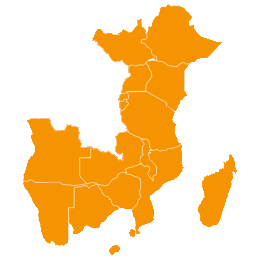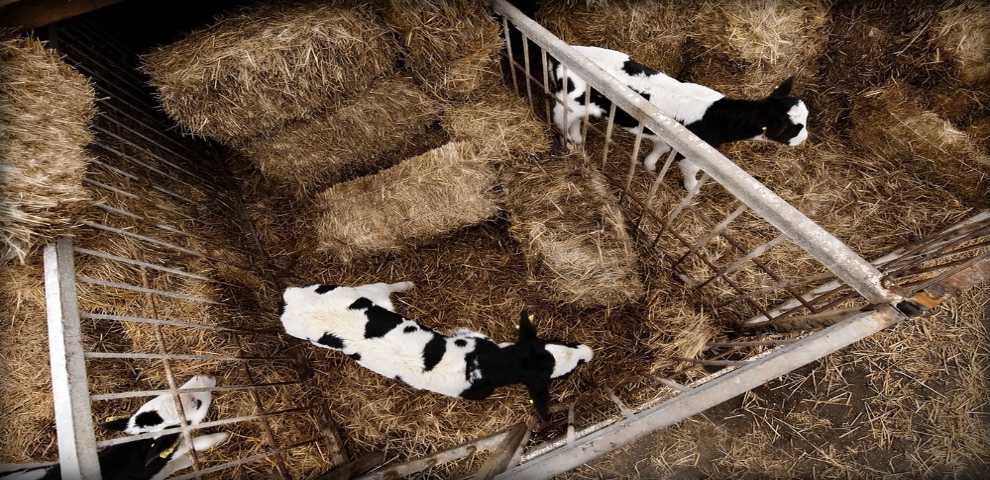Climate-Smart Dairy
Improved forage and climate-smart dairy systems have allowed farmers to increase their incomes. A 12- to 20-kilogram bale of Rhodes grass hay can be sold for between US$1.40 and US$6.90
BACKGROUND
Currently, livestock systems of the East African highlands suffer from low productivity, exposure to extreme weather and high greenhouse gas emissions. The solution supports the wide-scale adoption of context-specific forage options that improve productivity and livelihoods while decreasing environmental impact.
WHAT’S INVOLVED
Context-specific forage options for productivity : Milk production and animal productivity is increased by improving feed quantity and quality for dairy herds.
Assessment of multi-dimensional trade-offs of forage-based crop: An evaluation is carried out on the basis of laboratory (ex-situ) and field (in-situ) observations to measure the environmental impact of the diets.
Farmer-to-farmer learning: Exchange visits enable farmers to learn from other farmers’ efforts to improve livestock feeding and discover new farming practices.
EXPLORE THIS SOLUTION
The climate-smart dairy systems can offer:
- Innovation to increase dairy production and resilience of smallholder farmers
- Climate adaptation and mitigation of the dairy sector to reduce greenhouse gas emissions

Countries involved
Tanzania and Rwanda
Project partners
International Center for Tropical Agriculture (CIAT) Tanzania Livestock Research Institute (TALIRI) Rwanda Agricultural Board (RAB) International Livestock Research Institute (ILRI)
Share this solution
Bookmark this solution
BookmarkShow Full Solution
Summary
As a result of population growth and changing diets, the demand for meat and milk is rising quickly in East and Southern Africa. This increase presents new opportunities for livestock producers but also means increased greenhouse gas emissions. The goal of the climate-smart dairy system is to improve forages and feeding strategies that increase the incomes and resilience of smallholder farmers.
Challenge/Problem
The growing demand for meat and milk in East and Southern Africa, combined with intensifying smallholder dairy production, is straining the region’s natural resource base. Although mixed crop-livestock systems provide livelihoods for some 50 million of Africa’s poor rural people – and produce 70 per cent of Eastern and Central Africa’s meat and 90 per cent of its milk – these systems can also cause significant environmental damage. Livestock forage and feed, which urgently require a process of sustainable intensification, remain an outstanding challenge for many smallholder dairy systems in East Africa. Responding to this, the project supports the sustainable intensification of smallholder dairy production in Rwanda and Tanzania.
Solution
The innovation identified forage options (such as grasses and legumes) that are likely to increase productivity, improve soil fertility and mitigate the effects of climate change.
With feed interventions, low-quality feed from crop residues is replaced by improved Brachiaria grasses, Desmodium legumes or hay from Rhodes grass. The amount of high-quality feed is increased and differs by season, agro-ecological zone and cattle breed. In close collaboration with two national research institutes (the Rwanda Agriculture and Animal Resources Development Board [RAB] and the Tanzania Livestock Research Institute [TALIRI]) and two international research partners (the International Livestock Research Institute [ILRI] and the Commonwealth Scientific and Industrial Research Organisation [CSIRO]), data is collected to determine the most suitable feeds.
At the farm level, best-bet forages are tested in demo plots across 12 villages in Rwanda and Tanzania. Additionally, some seeds and cuttings are provided to the farmers to be planted on their own farms. Farmer field days and exchange visits ensure farmer-to-farmer learning. At least 100 farmers participated in exchange visits to learn from other farmers’ efforts to improve livestock feeding, and 25 more visited agricultural shows featuring wider agricultural and livestock technologies.
Agricultural research and extension systems are used to reach a wider group of farmers and increase their capacity. Farmers acquire the skills and knowledge to integrate new forages into their farming systems and feeding strategies.
The ultimate beneficiaries are small-scale dairy producers, especially women, youth and marginalized groups. The project was designed to ensure equal input from all genders and solicit insights in potential gender issues. For example, at the beginning of the project, the assessment teams were split into male and female groups. Among the 42 project farmers selected in Rwanda, 12 were women (29 per cent). In Tanzania, women made up 18 out of the 42 participants.
Results
Farmers have started to observe some positive impacts from feeding improved forage to their livestock. These include high biomass yield, even in periods of recurrent drought, and an increase in milk yield. Farmers have also reduced the time spent searching for grasses, mainly natural grasses, which become unavailable during the dry period.
In Tanzania, the improved forage has become a direct source of income. In May 2019, farmers were selling 12- to 15-kilogram bales of Rhodes grass hay for US$1.40 and 20-kilogram bales of Brachiara hay for US$6.90 apiece.
Making hay from Brachiaria is found to have a more positive impact on both milk yields and household incomes.
The introduction of improved forage in the southern highlands of Tanzania has led to more farmers keeping improved breeds of cows with the aim of increasing milk yields.
Lessons Learned/Potential for replication
In the long term, work is needed to set up a sustainable forage seed system to bridge the supply gap in access to seeds and planting materials.
Although the impact of improved forage and feeding strategies has already been observed among farmers, robust farm-level data are required to quantify large-scale impacts on food, nutrition and the environment.
Although data are being collected and good information is expected to come out of the project, the extent of potential impacts on soil health, water use and greenhouse gas emissions is not yet fully understood. However, no data are being collected to quantify the potential impact of the project on food and nutrition security. This could be the topic of a targeted accompanying study.
Next Steps
Through farmer-to-farmer exchanges, participation in agricultural shows and media coverage (radio and TV), the research work in the southern highlands has drawn the attention of other farmers in Tanzania (as far as Bukoba, Mwanza and Tanga). Because of the potential for increasing milk yields, farmers are keen on Brachiaria grass.
In Rwanda, interest has been observed, and scaling out is expected to be facilitated through close collaboration with the Rwanda Dairy Development Project. In both Rwanda and Tanzania, further strengthening networks with a wider variety of stakeholders will help in reaching people that are more rural.
Solution Additional Resources
Project websiteLast update: 26/07/2021


